As with much of history, date ranges span hundreds (if not thousands) of years and identifying the exact genesis of an invention, thought or aesthetic can be contentious. We turned to Anita Lal, founder of Good Earth – a contributor to, and custodian of Indian aesthetics – to share her insights on how the sari came to be. Its plausible origins date back 5000 years and span vast territory:
History > The tradition of wrapping unstitched cloth by men and women goes back to the earliest times of the Indian Subcontinent. A shawl draped on the statue of an Indus priest is proof that this tradition began during the Indus Valley period. The sari as a variant may have evolved later since it required a much longer piece of cloth, ranging from 4 to 9 yards, in order to drape both the lower and upper body.
Above: “Priest King”, in a trefoil drape – Mohenjo-daro image | Harappa.com
Alexander III of Macedon, commonly known as Alexander the Great, made his foray into India in the second century BC. He may have been responsible for influencing the clothing style of India and South Asia. When Chandragupta Maurya married Cornelia, the daughter of Alexander’s general Seleucus 1 Nicator, it seems that many other nobles of the Mauryan court also married Greek women.
The Greek ladies in the Mauryan court wore a long single piece of draped fabric known as chiton which was pleated as a skirt and draped over one shoulder.
Drape > Elaborate drapes resembling a sari can be seen in Greco-Indian Gandhara sculptures. This may have been a forerunner of the sari since in ancient Indian sculptures a woman’s dress was restricted to cloth wrapped around the waist more like a sarong with an occasional shoulder cloth.
Above: Helenistic influence on Gandhara sculptures from Pakistan, 2nd century BC
The genius of the Indian civilization lies in the creative methods used by different parts of the subcontinent in draping a piece of unstitched cloth that could be adapted equally to men and women for daily, ritual and even festive wear.
The Nivi drape remains the most popular today because it is an example of adapting the sari to give it easy, sexy appeal.
Fluidity > I think the use of unstitched cloth as body covering is gender fluid. The draping style determined the name, thus sari for women and dhoti, veshti and lungi for men. Chira was the Sanskrit word for a length of unstitched cloth which could also be adapted as a pagdi for the head or a shawl to cover the upper body. This influenced the entire clothing style of the islands along the Indian Ocean. The sarong is an example.
Above: ‘Krishna’, 1930, by Jamini Roy, gouache on canvas. It depicts Krishna as a young blue-skinned infant sitting on his foster-mother Yashoda’s lap. Yashoda is draped in a sari and is surrounded on either side by devotees, a man and woman both in draped garments. image | Victoria & Albert Museum, London
Future positive > We are fortunate to have inherited a continuous civilization unbroken since almost 3000 years. Temporal and spiritual traditions have been evolving and are still alive in so many of our crafts, weaves and rituals including chants of the Rig Veda. Our culture allows for flexibility, individuality and we have been able to absorb, assimilate and adapt to new and changing influences.
Ours is a deeply ingrained culture and that is what inspires confidence that we will adapt our clothing style and especially the sari to make it viable in the contemporary context.

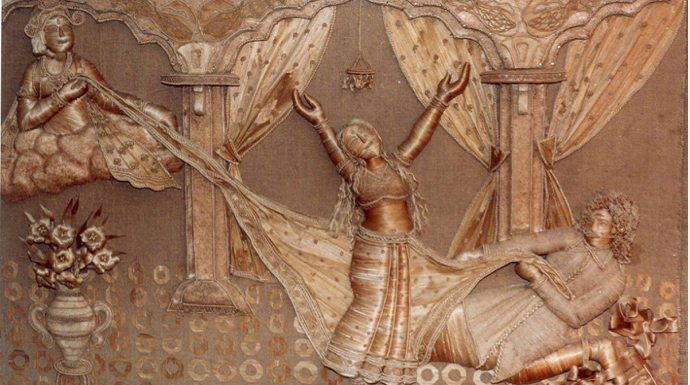
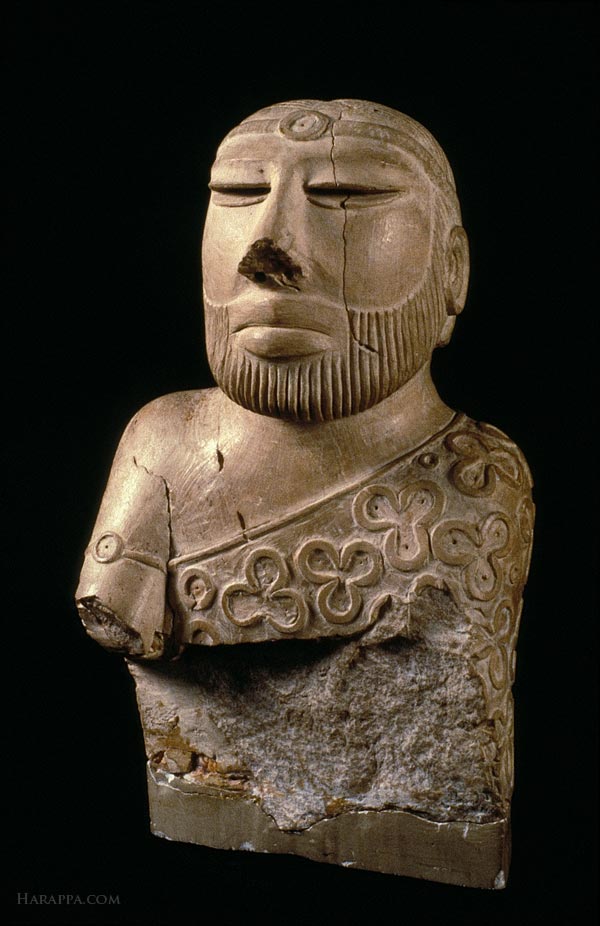
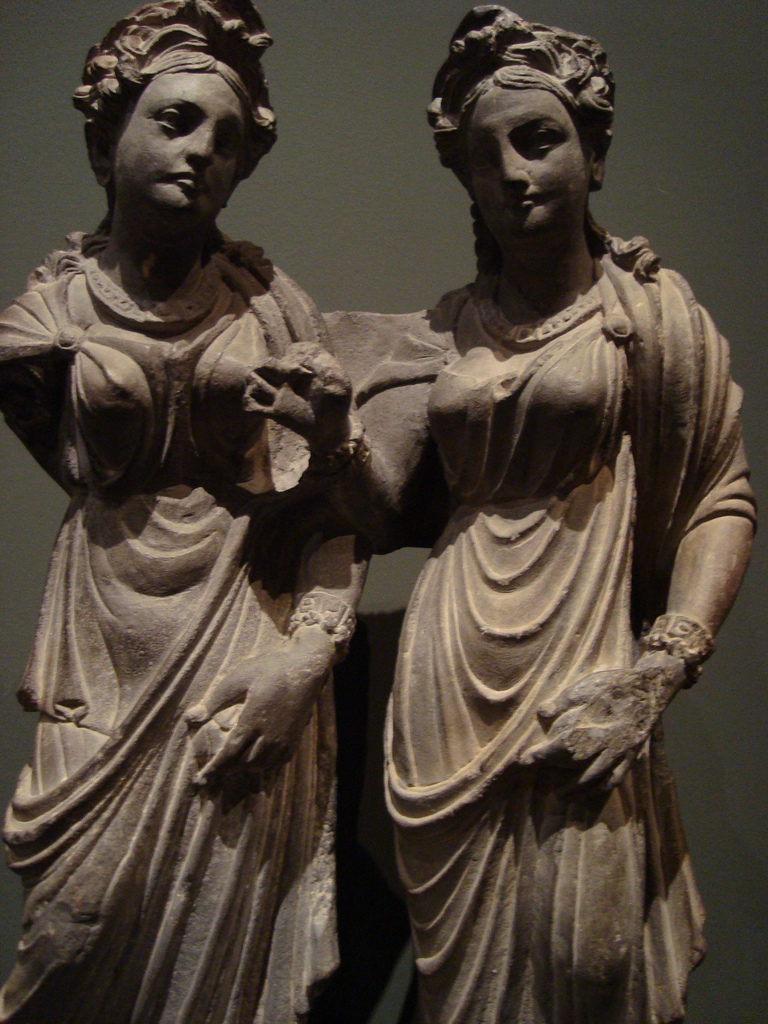
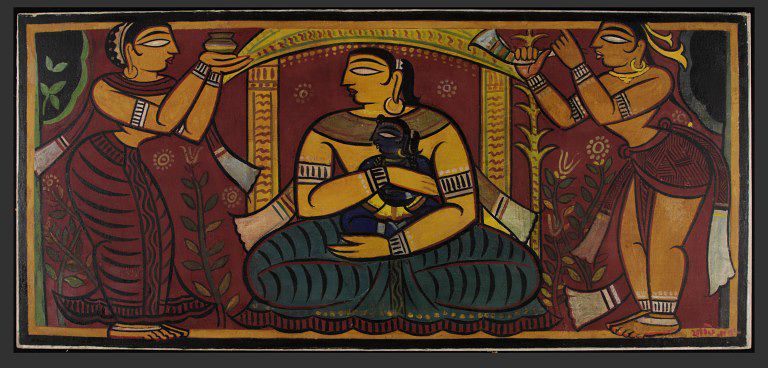


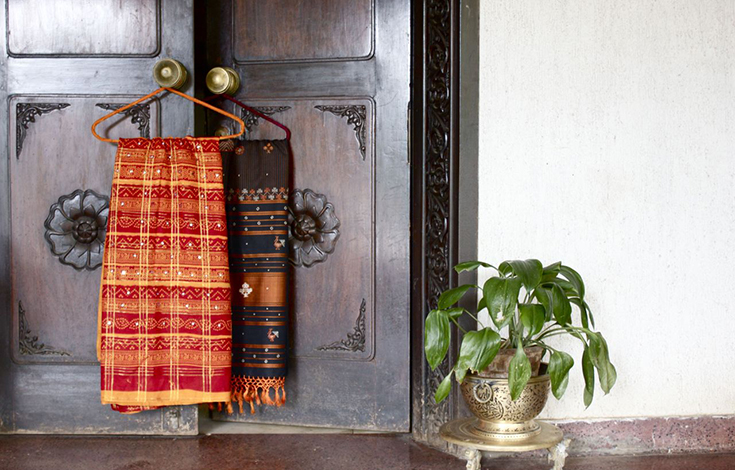
Loved this write up Mrs Lal. Always in love with the gracious and dauntingly graceful sari.